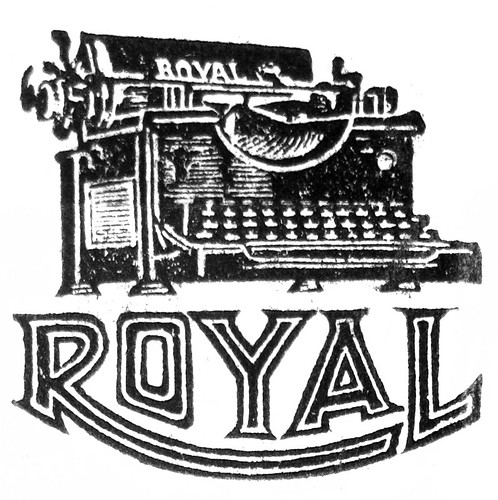- AlagomSwede
- New Member
 Offline
Offline - Registered: 02-3-2016
- Posts: 14
Re: Remington Noiseless 6 Cleaning and Platen Repairs
So being unable to get the platen out yet I decided to remove the return-lever and ratchet mechanism, making sure to record every step on film in case I screwed up. I've updated the album with a picture of what I'm left with:
The washer thingy seems solidly attached to either the rod sticking out or the frame of the carriage. Having poured some white spirits and, later, oil down the hole around the rod, and having tapped on it lightly (as well as not so lightly) with a hammer it still does not seem to be willing to move. What do you think, should I keep pounding on the rod or should I apply a different tactic?
- AlagomSwede
- New Member
 Offline
Offline - Registered: 02-3-2016
- Posts: 14
Re: Remington Noiseless 6 Cleaning and Platen Repairs
Never mind. I was finally able to get the bastard out by tapping out a small, threaded cylinder that kept the washer thingy, and what I thought to be the end of the rod, together with the platen and stuck to the carriage frame. Turns out the platen comes out in it's entirety, knob and all, after this with no rod going through it.
- •
- AlagomSwede
- New Member
 Offline
Offline - Registered: 02-3-2016
- Posts: 14
Re: Remington Noiseless 6 Cleaning and Platen Repairs
So I did a test shrinkage with some of the tubing over a fizzy tablets tube using a heat gun and it turned out a little bit uneven. What strategies do you guys use to get it as even as possible, and do you use tubing with or without glue?
- •
- treefaller
- Touch Typist
 Offline
Offline 
- From: The Dalles, Oregon, USA
- Registered: 24-9-2015
- Posts: 154
Re: Remington Noiseless 6 Cleaning and Platen Repairs
I have found the best way to shrink shrink tubing is to use steam. I get a tea kettle boiling and use that. Of course, I'm not working on a big project like a platen. I've just done this with electronics projects.
Don't use open flame, it makes the tubing wrinkle and bubble.
Bangin' around, this dirty old town, typin' for nickels and dimes...
- Uwe
- Moderator
 Offline
Offline 
- From: Toronto, Canada
- Registered: 12-3-2013
- Posts: 4,410
Re: Remington Noiseless 6 Cleaning and Platen Repairs
If you don't own a professional heat shrink 'oven', the proper tool to use for applying heat shrink tubing is a heat gun. I would never, ever, use steam as a heat source as it will trap moisture between the tubing and the material being covered.
To answer Swede's question, heat shrink tubing is sold in myriad sizes, thicknesses, and shrink properties. An online search will provide volumes of information concerning how to select the exact type and size of tubing for your job. At the same time, it's important to read up on the proper technique for applying heat shrink. If you want professional results it's worth your time to make sure that you start off with using the proper material and techniques. Most employ a 'hit and miss' approach and get satisfactory results, but I'd suggest investing a little time and familiarize yourself more with the product first.
The pronoun I has always been capitalized in the English language for more than 700 years.
- AlagomSwede
- New Member
 Offline
Offline - Registered: 02-3-2016
- Posts: 14
Re: Remington Noiseless 6 Cleaning and Platen Repairs
Uwe wrote:
If you don't own a professional heat shrink 'oven', the proper tool to use for applying heat shrink tubing is a heat gun. I would never, ever, use steam as a heat source as it will trap moisture between the tubing and the material being covered.
To answer Swede's question, heat shrink tubing is sold in myriad sizes, thicknesses, and shrink properties. An online search will provide volumes of information concerning how to select the exact type and size of tubing for your job. At the same time, it's important to read up on the proper technique for applying heat shrink. If you want professional results it's worth your time to make sure that you start off with using the proper material and techniques. Most employ a 'hit and miss' approach and get satisfactory results, but I'd suggest investing a little time and familiarize yourself more with the product first.
Thanks. I did get myself a heat gun for this application (it was only about 10 € anyways). I also consulted my father, who is an electrician, and his preferred method is to set the heat gun on the table and rotate the piece slowly above it starting on the midpoint of the tube and working slowly outwards. It seems to have worked out pretty well!
- •
- TypewriterGuy
- Typewriter Talk Vet
 Offline
Offline 
- From: United States
- Registered: 24-4-2015
- Posts: 1,250
Re: Remington Noiseless 6 Cleaning and Platen Repairs
I cannot say this enough. Make sure the tubing is as tight as it can be! If its not, it MIGHT wrinkle and will not be even!
Back from a long break.
Starting fresh with my favorite typer. A Royal Futura!
- AlagomSwede
- New Member
 Offline
Offline - Registered: 02-3-2016
- Posts: 14
Re: Remington Noiseless 6 Cleaning and Platen Repairs
TypewriterGuy wrote:
I cannot say this enough. Make sure the tubing is as tight as it can be! If its not, it MIGHT wrinkle and will not be even!
Thanks for the tip. I think I pretty much got it as tight as I could. I think I stood there for a half hour before I was satisfied. ![]()
I'm probably going to apply a second layer in the next few days so I'll keep that in mind.
- •
- TypewriterGuy
- Typewriter Talk Vet
 Offline
Offline 
- From: United States
- Registered: 24-4-2015
- Posts: 1,250
Re: Remington Noiseless 6 Cleaning and Platen Repairs
Just letting you know, you have to sand down the width of the wall of the tubing from the platen for every tube you plan to use. Otherwise, it will affect how the platen and feed rollers work.
Back from a long break.
Starting fresh with my favorite typer. A Royal Futura!
- AlagomSwede
- New Member
 Offline
Offline - Registered: 02-3-2016
- Posts: 14
Re: Remington Noiseless 6 Cleaning and Platen Repairs
TypewriterGuy wrote:
Just letting you know, you have to sand down the width of the wall of the tubing from the platen for every tube you plan to use. Otherwise, it will affect how the platen and feed rollers work.
Yeah, I was thinking about that. What grit of sand paper would you say be preferred for that application, and how exact do I have to be with the thickness? I think I read in the AMES technicians manual that an acceptable margin is 1% of the diameter of the platen, but that's for removing material, not adding.
- •


